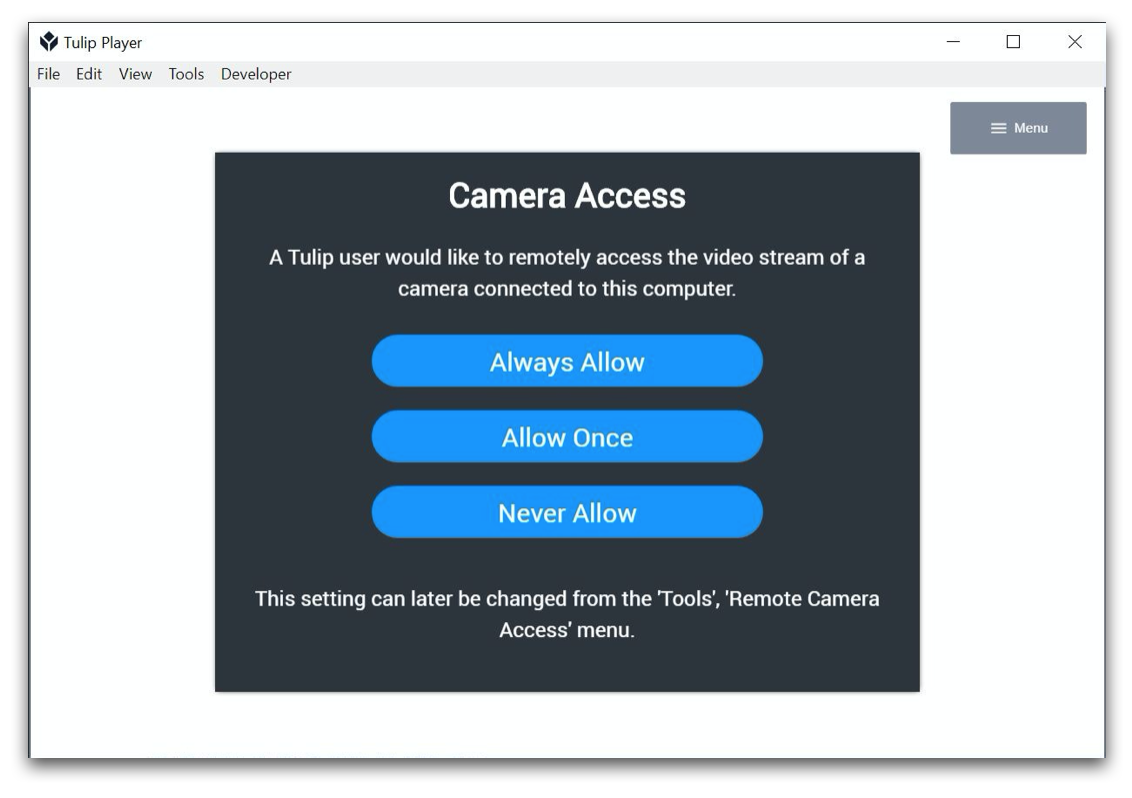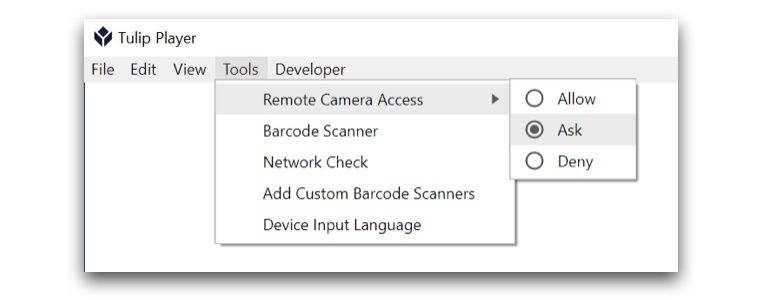Vision and Privacy
Learn about Vision's Privacy Protections for Remote Camera Access
It's important to note that all Detectors run locally in the Tulip Player (at the edge). During normal operation, Vision does not send video data to the cloud. Only the detected events, such as "Changes Began" from the Change Detector, will be sent to the cloud. This is the same as for other, non-camera devices connected to the Tulip Player, or Tulip Edge Devices.
Additionally, viewing a video stream inside an app by using the Vision Camera Widget does not require sending any video data to the cloud. It also does not consume network bandwidth.
Video data will only be sent to the cloud if a Tulip user (who has a role of Station Supervisor, or higher) streams the camera's video remotely. For this scenario we added the Camera Access dialog to Tulip Player.

After a user has made a selection in this dialog, the selection gets represented in the "Tools", "Remote Camera Access" menu. This setting can be changed any time. By default, Ask will be selected. The behavior is as follows:
- Allow: The video of all connected cameras can be remotely viewed by Station Supervisors.
- Ask: The "Camera Access" dialog gets shown when a Station Supervisor requests to start a new video session. On answering "Allow Once" a remote video session gets started and video data is send to the cloud. While a session is active, other Station Supervisors can join to remotely view the video. The session automatically ends 5 seconds after the last Station Supervisor stopped viewing the video.
- Deny: Video data never gets send to the cloud.

The "Remote Camera Access" setting is stored globally for the Microsoft Windows user for whom Tulip Player is installed.
Further Reading
Learn how to configure your camera:
Learn more about Vision's detectors:
